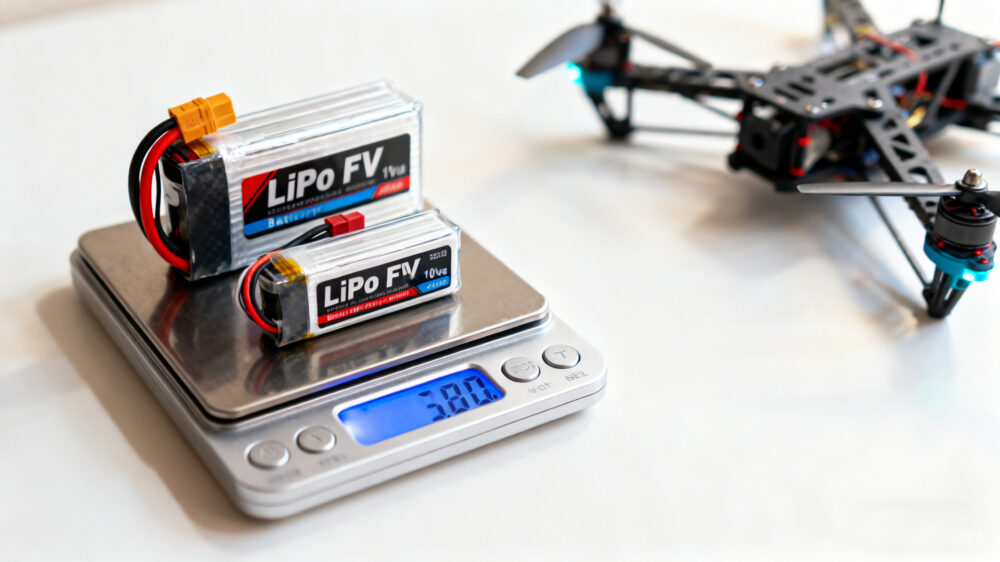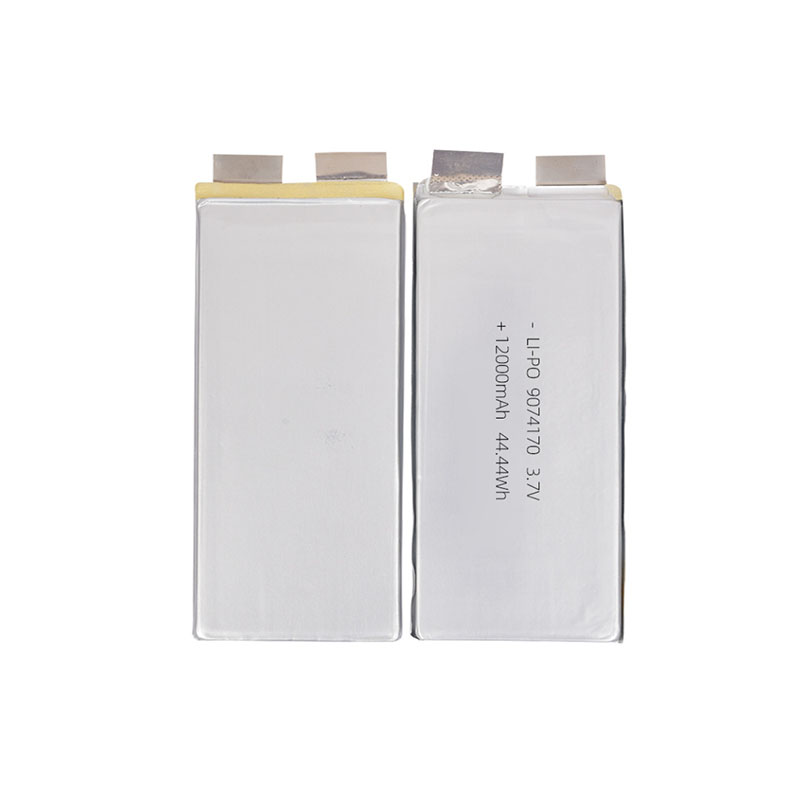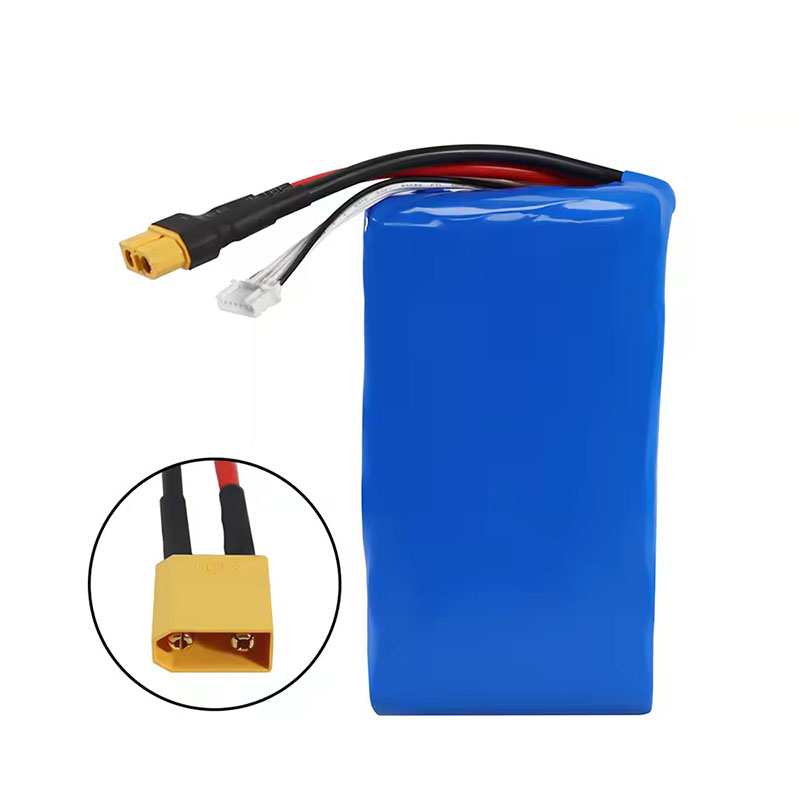Blog
Explore the Power of Lithium Innovation
Stay updated with the latest trends, technologies, and application insights in the world of lithium battery solutions
Search the whole station
Explore the Power of Lithium Innovation
Stay updated with the latest trends, technologies, and application insights in the world of lithium battery solutions
When I first got into FPV (First Person View) flying, I honestly didn’t pay much attention to the battery. I thought—hey, as long as it flies, it’s fine. But later I realized, the FPV battery is literally the heart of the drone. If your quad feels sluggish, unstable, or cuts out mid-air, nine times out of ten—it’s your battery’s fault.
Back when I started, I used a 4S 1300mAh LiPo battery and assumed it could last a solid ten minutes. Guess what? It barely made it past six before the voltage sagged. Motors lost punch, the video feed stuttered—it was a mess. That’s when I learned FPV batteries aren’t about “bigger capacity,” they’re about discharge rate (C rating) and balance with your setup.

Bigger capacity doesn’t always mean better performance. A 2200mAh pack with low C rating will feel way worse than a smaller, higher-rated one. And that “S number”? Took me a while to realize 4S means 14.8V, 6S means 22.2V. Sure, 6S gives you more power and smoother throttle, but not every quad can handle it—burned an ESC once because of that mistake.
After a few months (and a few too many crashes), I switched to a 6S 1100mAh pack for my 5-inch drone—and man, the difference was huge. The throttle response was clean, punchy, and the flight felt… alive. You’ll notice that crisp acceleration only when voltage and discharge match your motor setup.
But here’s the catch: don’t fall for those “150C” or “200C” labels. Most of the time, those numbers are inflated. If the pack can actually sustain half of that, you’re lucky. I stick with 75C to 100C; reliable, predictable, no nonsense.
And weight—oh, that’s another rabbit hole. Two batteries, same capacity, 30 grams apart—completely different flight feel. Too heavy, and you lose agility. Too light, and it drains fast. There’s no formula here—you just have to fly and feel it.

Most FPV pilots deal with three kinds of batteries:
I once built a pack with four 18650 Li-ion cells. It flew for 15 minutes straight—but the throttle felt soft, like the drone was half-asleep. Great for cruising, terrible for freestyle.
Nowadays, I have this ritual: as soon as I’m done flying, I balance-charge everything and store them at 3.7V per cell. If you leave them full for days, puffing is just a matter of time.
And don’t skip the balance lead when charging—it keeps the cells even and healthy. I used to charge only through the main lead for convenience; big mistake. Uneven cells kill batteries faster than crashes.
I even switched from XT60 to XT30 connectors for smaller builds. Saves about 10–15 grams—not much, but it makes the drone feel snappier in the air. FPV is a game of small margins, trust me.
Here’s a classic one: buying a huge 2200mAh battery hoping for longer flight time, only to end up with a sluggish quad that handles like a brick. Heavier battery = more inertia = less fun. Sometimes “more” really is less.
Another thing—don’t overcharge your LiPo. Even though 4.2V is standard, I stop at 4.18V. That tiny difference barely affects flight time but noticeably extends battery life. I learned the hard way—used to charge aggressively, and within months my packs looked like balloons.
You’ll never find a perfect one. There’s no such thing as a battery that’s lightweight, powerful, and long-lasting all at once. Something’s always gotta give.

Now I match batteries by purpose:
Each has its own “personality,” just like cars.
Fly long enough, and you’ll develop a weird sixth sense for batteries. You can tell if a pack’s “off” just by picking it up. A few laps in, and you’ll know if it’s time to retire it.
These things can’t be taught—they’re learned through puffed packs, burnt connectors, and a few too many crashes.
Honestly, nowadays I don’t even obsess over specs. I pick up a new pack, look at it, and think, “yeah, this one feels right.” And somehow, that instinct’s rarely wrong.

Get reliable 33.3V 18650 drone battery pack built with Grade A lithium-ion cells. Ideal for drones, security systems, medical devices, aerospace, and industrial equipment. We offer custom drone battery packs with long cycle life, high discharge performance, and stable power. OEM/ODM supported by a leading drone battery pack manufacturer in China.

Apsenx 3S LiPo battery delivers powerful, stable energy for FPV and RC drones. Designed for advanced pilots, it balances voltage, capacity, and weight for optimal flight performance and extended runtime.

Apsen 12000mAh high-rate low-temperature UAV lithium battery with smart BMS for industrial and consumer drones. Long endurance, high discharge rate, customizable voltage, and certified global safety compliance.

Apsen 8000mAh 21700 6S2P 22.2V 10C LiPo battery for RC aircraft, FPV drones, and industrial UAVs. High discharge rate, customizable connectors, OEM/ODM support, and certified safety compliance.

Apsenx 6S 22.2V 12000mAh LiPo battery for agricultural drones, FPV racing, and RC aircraft. Features XT90 connector, high discharge rate, long flight endurance, and full OEM customization.

Apsenx 22000mAh 8S1P 30.4V lithium battery for drones, RC aircraft, and industrial equipment. Delivers 668.8Wh with XT90 connector, stable voltage, and full OEM customization options.

Apsenx 22.2V 15000mAh 10C high-rate 21700 Li-ion battery for FPV drones, RC aircraft, and agricultural UAVs. Delivers up to 150A continuous discharge with XT60 connector, long cycle life, and stable performance.
If your power tools, scooters, or RC builds stall or overheat, it’s probably your battery’s fault — here’s how I choose the right high discharge 18650 cells.
View detailsFrom flashlights to DIY battery packs, I rely on 18650 4000mAh batteries for longer runtime—but only if you know how to verify real capacity and match discharge rates.
View detailsLearn how to charge custom lithium battery packs, including series and parallel connections, optimal charging methods, temperature considerations, and best practices for lithium-ion batteries.
View detailsadvantages of 32700 LiFePO4 cells from custom factories. Explore their high current resistance, versatility, lightweight design, and applications in EVs, solar lights, and renewable energy storage.
View details
HelloPlease log in